How do you get from mixing bands live and engineering Flying Nun records to creating your own brand of superb loudspeakers? GARY STEEL chats with Tex Houston.
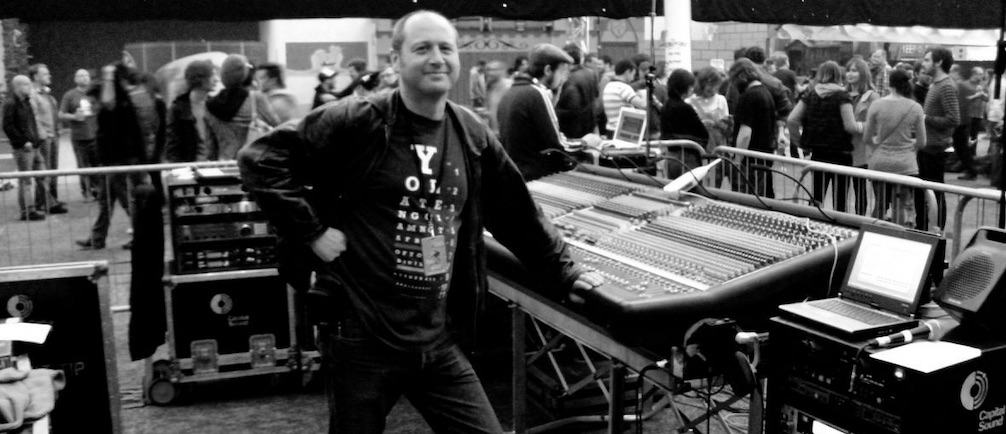
When Witchdoctor first heard that Tex Houston – a backroom man of considerable distinction in New Zealand music circles – had come up with his own high-end loudspeakers, we were stumped for words.
The words “Flying Nun” and “hi-fidelity” aren’t exactly the most obvious bedfellows, but then, how many real music fans want to spend their lives listening exclusively to Dire Straits and Norah Jones records?
And when you start to grasp the gist of Tex Houston’s experience and history, it all starts to make sense. The guy has sound credentials in the real world, having started his professional life mixing gigs for that 1980s pop/soul phenomenon, the Netherworld Dancing Toys, and subsequently becoming live sound engineer on international tours for some of the bigger names on the Flying Nun roster in the late ‘80s.
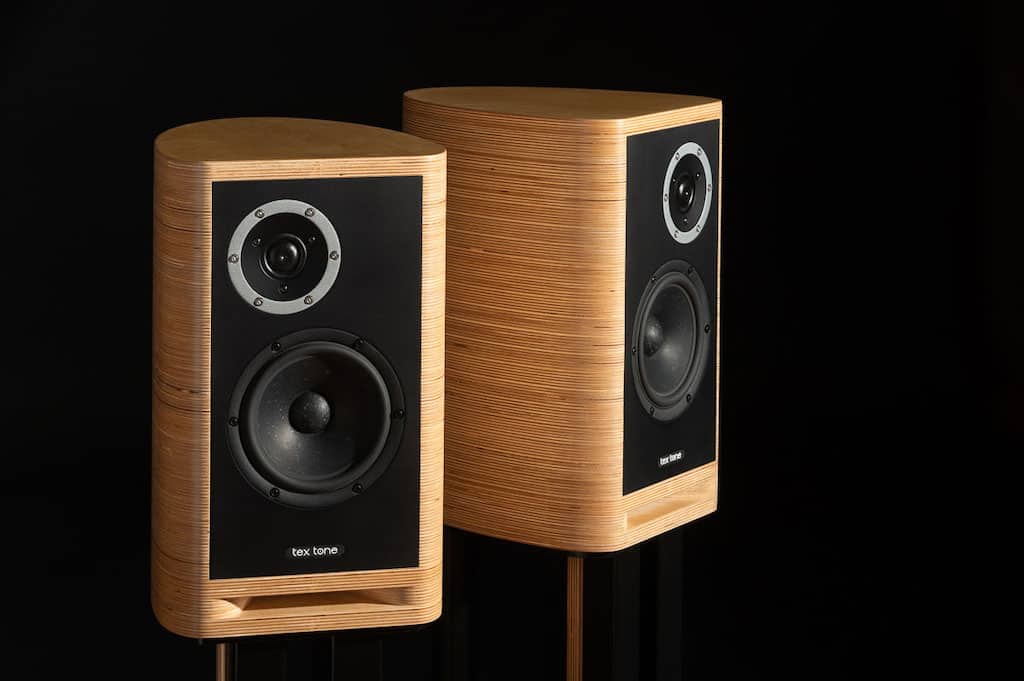
Later, he co-owned Fish St Studios in Dunedin, where he recorded the likes of The 3Ds, The Able Tasmans, The Verlaines and The Clean.
It turns out that Tex – apart from being a knob-twiddler supreme – is also an inveterate fiddler. And by that, we mean the kind of guy who can have a party with a bit of wiring and a broken amp to fix. But that’s not all. It’s clear that he’s more than “that guy” who lurks in the back of the mancave, perpetually soldering things just for fun. He’s also a fellow who lusts after all that is excellent. As he revealed in our chat, it’s not just great sound that he pursues, but great everything: he roasts his own coffee beans, brews his own beer, and is no doubt a kitchen whizz as well.
So perhaps it’s not such a bizarre notion that someone whose musical associations are mostly with alt-rock bands would concoct his own rather excellent brand of loudspeakers, Tex Tones.
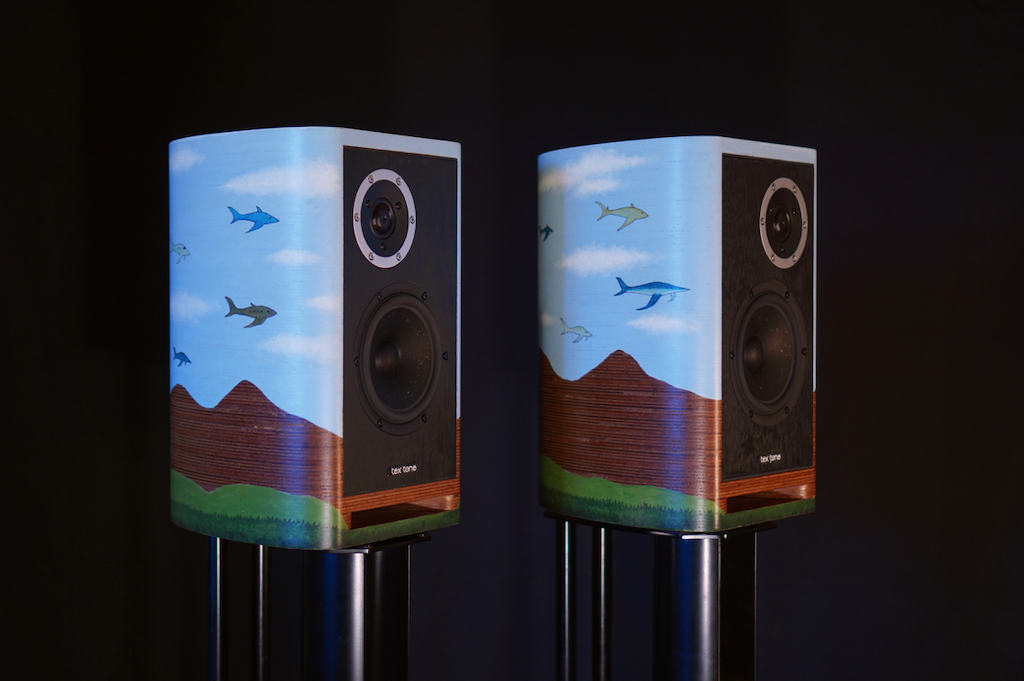
Launched quietly late last year through his website (there are currently no retail shops carrying the speaker, although the new Relics Hi-Fi shop in Dunedin, which will concentrate on locally manufactured audio gear, will stock them), the Tex Tones have a small but ardent fan base.
The respect with which the speakers (and Tex) are held is reflected in the new Art Speaker range of Tex Tone speakers, for which notable artists like Chris Knox, David Kilgour (of The Clean), Robert Scott (The Bats), and Nicola McLaren (an artist and ceramist whose work is apparently held in high regard) have unleashed their paint-on-wood powers.
They’re stunning, and while they’re a couple of grand more to buy than the normal Tex Tone speakers, the art alone would surely be worth more than that if it was on exhibition. A bonus is the fact that the curved surface of the speakers works so well in displaying the art from whichever angle you’re viewing it.
The special edition art speakers have just been launched, and to mark the occasion, we had a nice long chat with Tex.
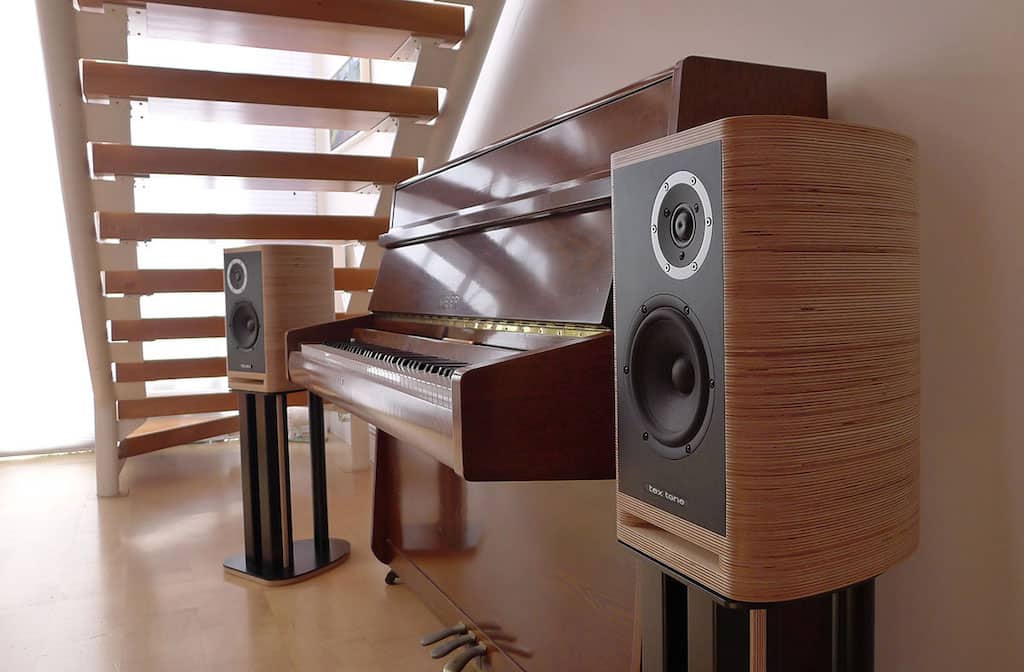
Gary Steel – I’m finding especially in the last year or so that local companies and even importers and distributors are going, ‘there’s just no shops to sell my stuff’.
Tex Houston – I know, that’s exactly right. I haven’t explored getting into shops too much. I’ve had a few approaches about selling them overseas, but the thing is it becomes so incredibly, ludicrously expensive by the time it gets over there and the mark-up goes on and all that sort of stuff. The whole idea initially was to try out the website, see how it goes, see if we can sell them through that, and then maybe try and get into the shops as well. We’ll have to see how that goes.
Gary – Do you have a shop in Auckland that’s selling them?
Tex – No. Relics, which is a second-hand shop in Dunedin, is starting a shop next door called Relics Hi-fi. They’re going to have a pair in there. I’ve sold a few pairs in Auckland.
Gary – It’s a tough one because just selling them on the website means people can’t hear them until they buy them.
Tex – Exactly, and with a high end, expensive item you really want to audition them first. It is really tricky. It’s funny because I started this off for myself and never envisaged it going any further, but it grew. I started exposing them to friends of mine and they were like ‘Wow! Can you make me a pair?’ And it grew from there really.
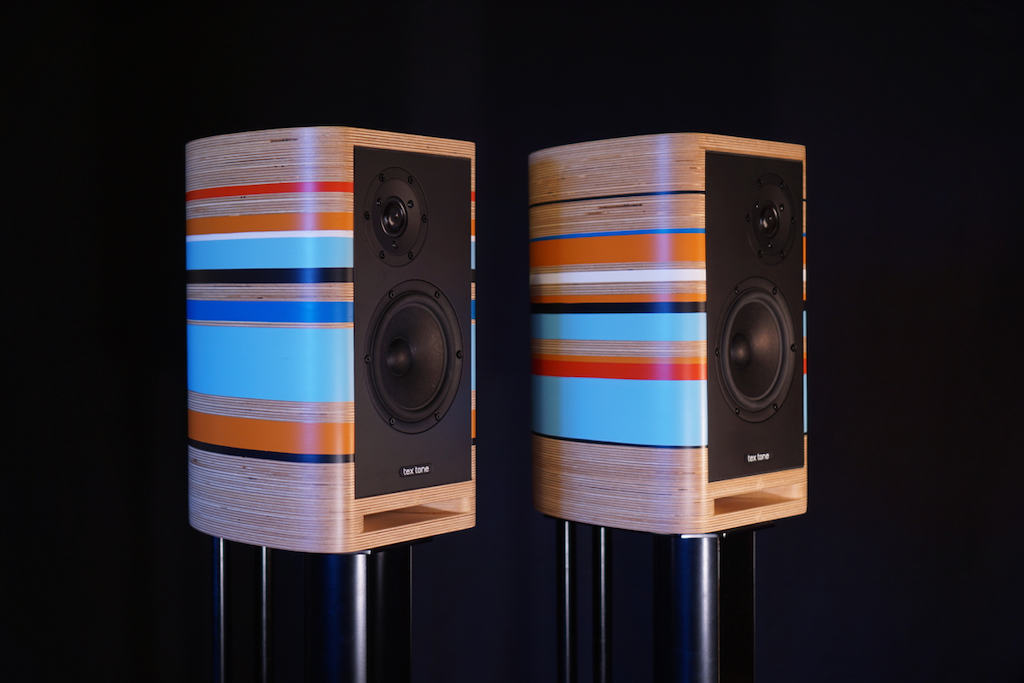
Gary – What made you think… This is going to sound rude. Don’t take offence, but… with all these speaker companies around the world putting hundreds of thousands into R&D, what made a guy down in Dunedin think that he could produce speakers that were as good or better than what those guys are doing?
Tex – I’ve had so much experience listening to speakers and been in studios and listening to gigs. Just looking around me at the moment I’ve got Genelecs, Questex, ATCs, Spendors, Kefs… I’ve been a speaker nut for a very long time. But I also understand things like crossover systems through PA systems. I’ve got a lot of knowledge, and really I’m a DIY guy and I thought ‘I can give this a go’, and I gave it a go and then I thought ‘that’s okay but it’s not that great’, and then I thought ‘I can make it better though’ and I kept going on until I eventually got this this point and just went ‘wow, that’s really awesome’. I thought, ‘I’ve got something quite special here’ and when I played them to audiophiles and friends who loved music they agreed. It certainly wasn’t arrogance on my part. I know that if I have good drivers, good crossover components and get everything right I’m going to come up with something pretty good. And I did mess around for an awful long time with boxes and drivers and different crossovers, etcetera, until I was kind of happy. But I have been listening to active speakers in the studio a lot, and I wanted to get the active speaker vibe but put it in a passive box because I don’t think active speakers have ever really taken off in domestic hi-fi. People have their amps and sources and they like to be able to change bits and pieces about.
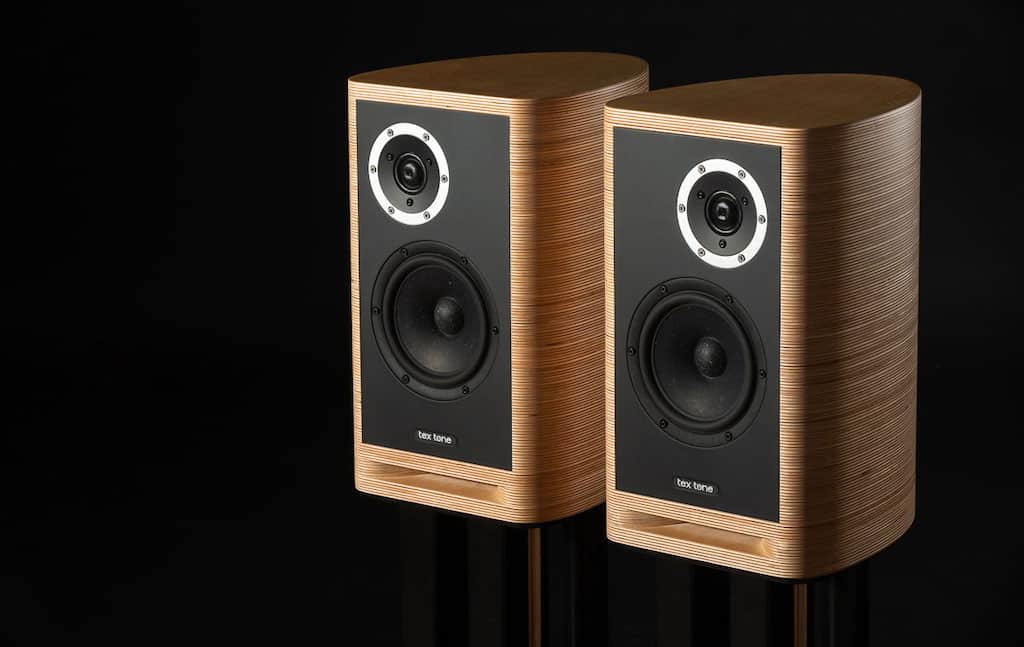
Gary – It’s interesting hearing someone like yourself who actually know the technical reasons for a speaker doing what it does, and trying to understand it. It’s a fascinating realm.
Tex – It is, it’s really fascinating. I don’t want to stop with where I am either, because it’s actually a lot of fun to explore the different options out there. People have asked me for little bookshelf speakers and so I’ve got a prototype going on those at the moment. I had someone ask last week whether I was going to make a floorstander. And I would like to try an active pair as well. But that’s on the assumption that I can at least break even and keep things moving.
Gary – One of the fascinating things with your situation is that you’re actually a music guy for a start and you’ve been involved in studio engineering and live work, too. Which is very rare when it comes to the rarefied world of hi-fi. In my experience with hi-fi sometimes they don’t actually like music that much.
Tex – It’s more from a technical perspective.
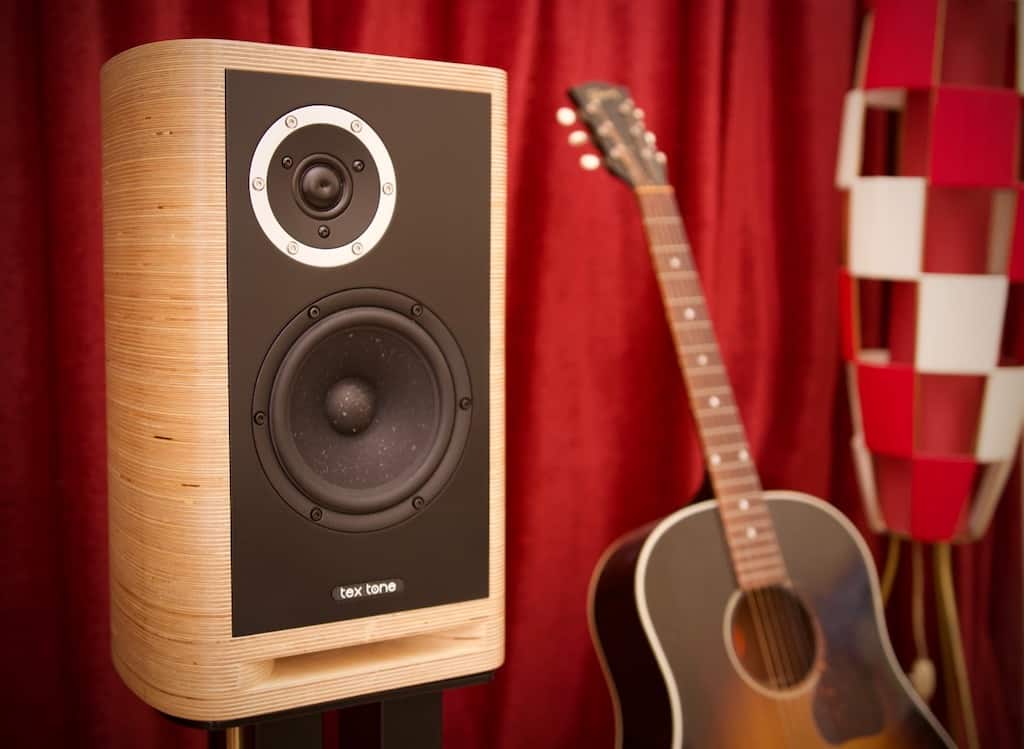
Gary – Technical and the music they like is geared towards that audiophile spectrum which would be as far away from Flying Nun as you could imagine – the alt-rock aesthetic.
Tex – I would never call myself an audiophile, that’s for sure.
Gary – So that’s the question, really. They look like audiophile speakers. And you’re obviously seriously into good sound.
Tex – I’ve started experimenting with DACs and things. I used to make a lot of mic preamps and compressors and all sorts of gear for the studio, and I like fiddling with electronics. I brew my own beer and roast my own coffee.
Gary – How did you price the speakers in the end? Was it based on the practical aspect of the work that goes into them and the material costs, or did you look at the market.
Tex – I haven’t really looked at the market. I’m just not really that person. I’m not very good with money. I might have to think about that question.
Gary – Are the art speakers a specific price?
Tex – I put them two thousand dollar more so they’re $8,900 and that two thousand dollars goes directly to the artist.
Gary – That’s an absolute steal for those who have the money.
Tex – I think so. That is a lot of money but it’s hard to put a price on art.
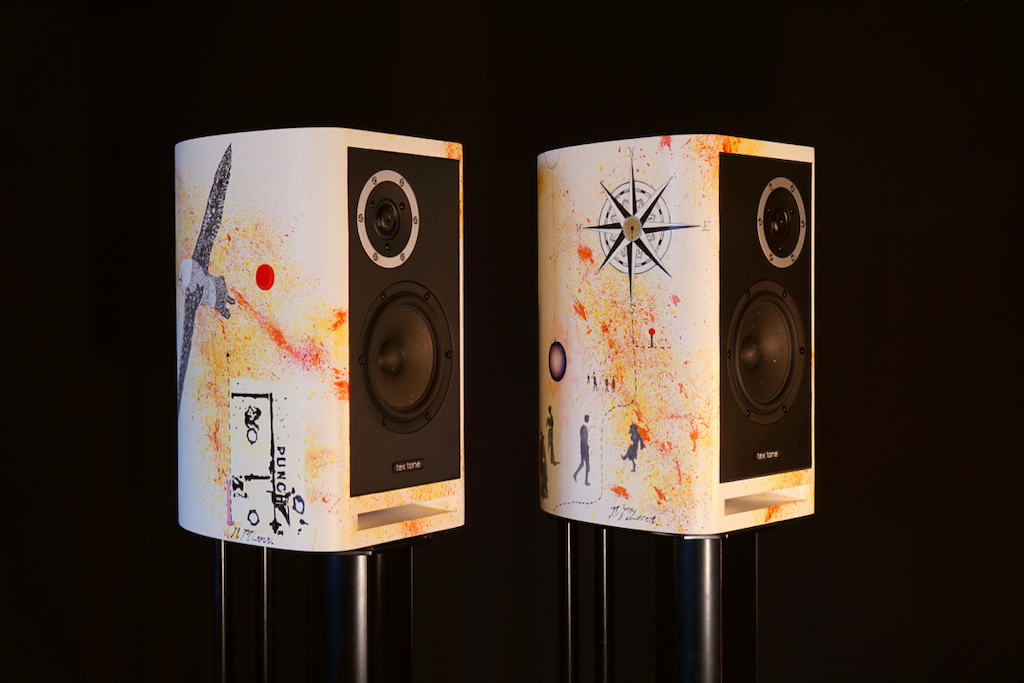
Gary – A well known local artist would sell one artwork for 20 or 30 grand, so…
Tex – Exactly, and you’re getting two canvases here.
Gary – How did you come up with the idea to put art on them?
Tex – We were just looking at them one day, me and my partner Nikki, and she was like “wow, you could actually do artwork on these,” just because of the curved shape it lends itself. Your standard box speaker would look weird with its sharp corners. I’ve done a short 20-second video of each one (on the website) so you can actually see when it spins around what’s going on as well.
Gary – How did you choose your drivers and tweeters?
Tex – I went with the lower end when I was just starting out and then I started ramping it up because I found the more I paid, the more money I spent on drivers, the better the speaker is. It’s just quite incredible really. The high-end drivers just sound great. These ones are made in Indonesia, they’re called SB Acoustics but they’re ex ScanSpeak engineers who have branched out. A lot of the forums rave about them. They’re an amazing sound. Even the six-and-a-half-inch driver is pretty full range. It sounds very nice all by itself. It just gets a bit ragged at the very top, so I think just the high quality driver makes a big difference and it also makes for a more simple crossover which I think also benefits the sound. Less components in the crossover is a good thing, you know.
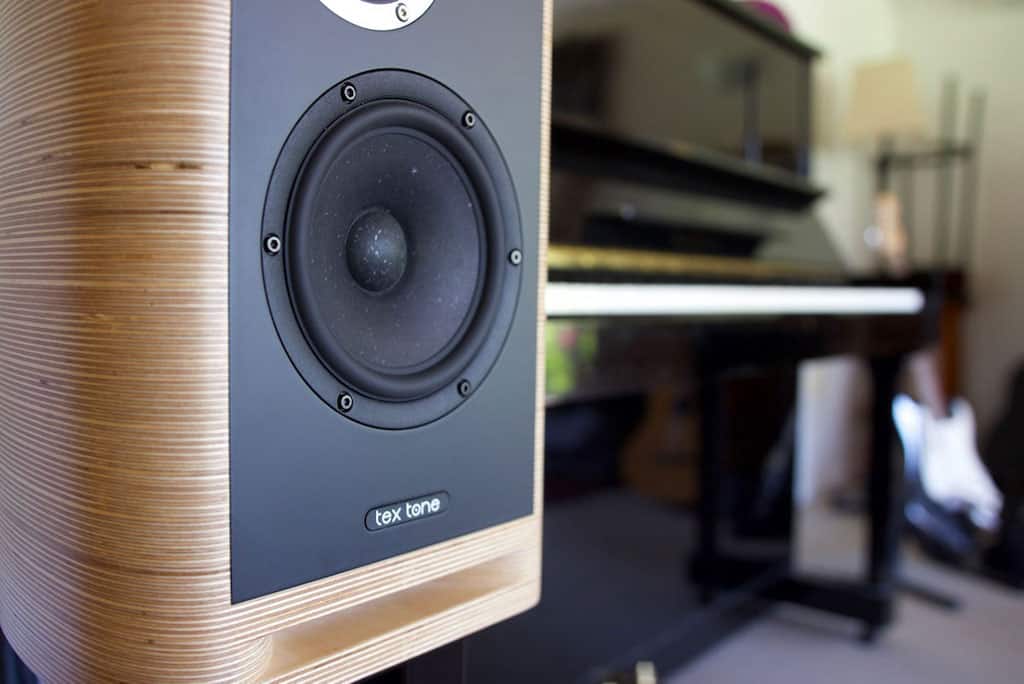
Gary – There seem to be so many speakers at the moment that have got multiple drivers and tweeters. And you just wonder what kind of weird crossover nonsense is going on.
Tex – Simplicity is really good. Some purists really go for that one-component, first order crossover, but it’s hard to find drivers that are good enough to accommodate them. Multiple drivers in very big speakers – people must have very large listening rooms! My little speakers – a six-and-a-half inch and a tweeter, can really fill a room.
Gary – You wouldn’t need to put a sub with them?
Tex – No! That’s the thing, they really have amazing bass, and I guess doing a lot of gigs with enormous bloody subwoofers everywhere I’ve sort of gone off that. I’ve never been a doof-doof kind of sound guy anyway. I don’t really need that thumping lower octave. But these speakers, they dig really deep, they go right down to 28 Hertz. So they’re pretty impressive in the bottom end.
Gary – I think you’re right that the speakers are the key element in the chain and that while the source makes an incredible difference to the sound the fundamental sound is the ability of the speaker.
Tex – That’s right. You notice the difference between swapping the cartridge on your turntable and this CD player to that CD player, but really the most major change comes when you change your speakers. And the amplifier should really be more of a straight wire anyway – all it’s doing is amplifying. I’m enjoying the Class D stuff and thinking that it’ll probably be the way of the future.
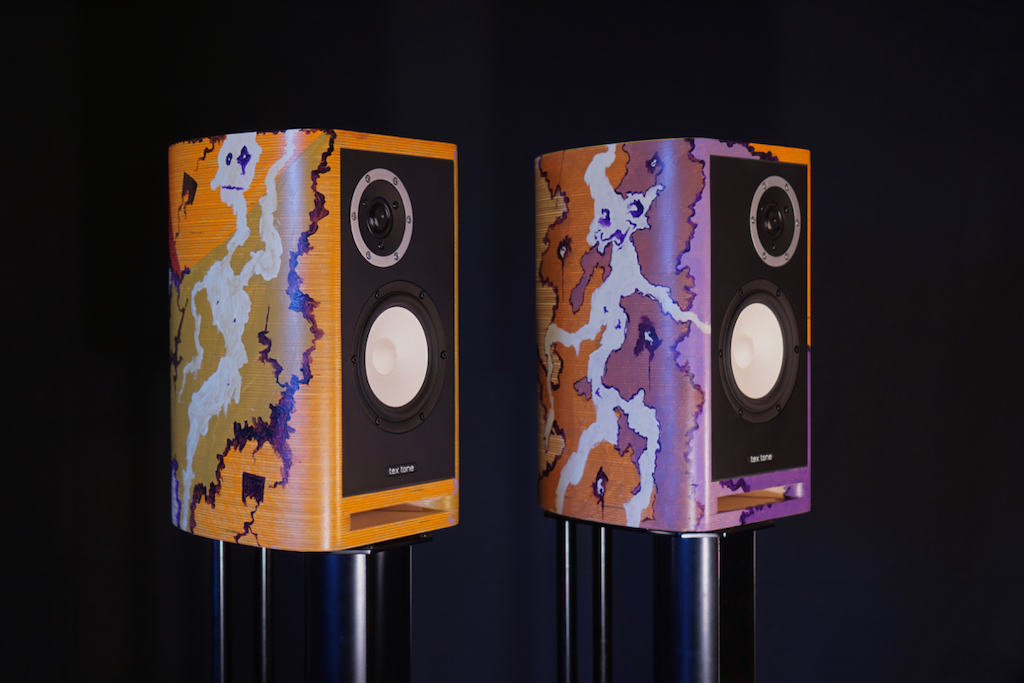
Gary – One thing I’ve noticed over the years is that hi-fi speakers tend to be voiced in such a way that they sound brilliant on nicely mastered and engineered records but terrible on anything else. Some speakers sound amazing on acoustic music, but a lot of hi-fi gear doesn’t deal well with stuff that’s multitrack, pop and rock… it tends to sound compressed and thin and lack the dynamic that you’d be hearing if you were putting it through a crappy car stereo!
Tex – I think the musicality of the speakers is the most important thing. In the ‘80s my now partner had a pair of Spendor Preludes and I absolutely loved those speakers, they sounded so musical. And then I ended up buying some Spendor SP1s later and absolutely loved those as well. And they’re your classic BBC-monitor-type sound. I wasn’t trying to emulate them but they affected the way that I voiced them perhaps. I had someone around yesterday and we played just about everything you can think of apart from classical. We were playing stuff from the ‘50s, ‘60s, ‘70s, pop, electronica… and my speakers sounded great on all the different genres. I’m quite proud of them in that way.
Gary – People tend to take their best sounding records to an audition rather than their favourite records.
Tex – Yeah, you’ve got to play a variety. A friend of mine who used to be in hi-fi retail was saying that you get very, very sick of listening to Dire Straits. You poor bastard, I was thinking. How many times can you listen to ‘Money For Nothing’ without going insane?
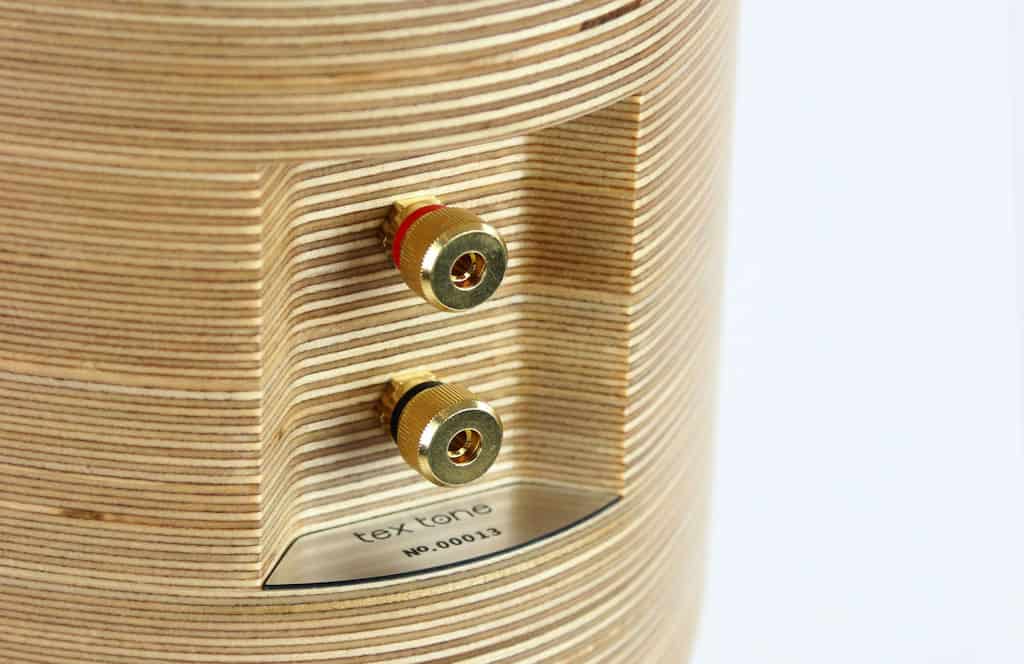
Gary – How do those early Flying Nun records would sound on your speakers?
Tex – They’re great (laughs). Maybe I’m a little biased because I love those tracks anyway. If they were thin then they’ll be thin now.
Gary – I suppose the key is putting out the authentic sound but having them so that they’re still listenable. It’s when you get speakers that are so rarefied that anything that’s not beautifully recorded sound is unlistenable…
Tex – That’s what’s wrong. You want to be able to play everything and enjoy it all. I think you can on my speakers.
Gary – Do you think of them as being specially concocted for domestic use? Or is it somewhere between a studio monitor and a domestic speaker? I’ve never really understood the difference. One is designed to be listened to quite near the speaker?
Tex – Yeah, the little Genelec that I’ve got in front of me at my desk… they’re four-inch speakers, but they’re incredibly flat. Flat is not how most people like to hear things, they prefer a little tilt – a slightly elevated bass and a slightly softer top end.
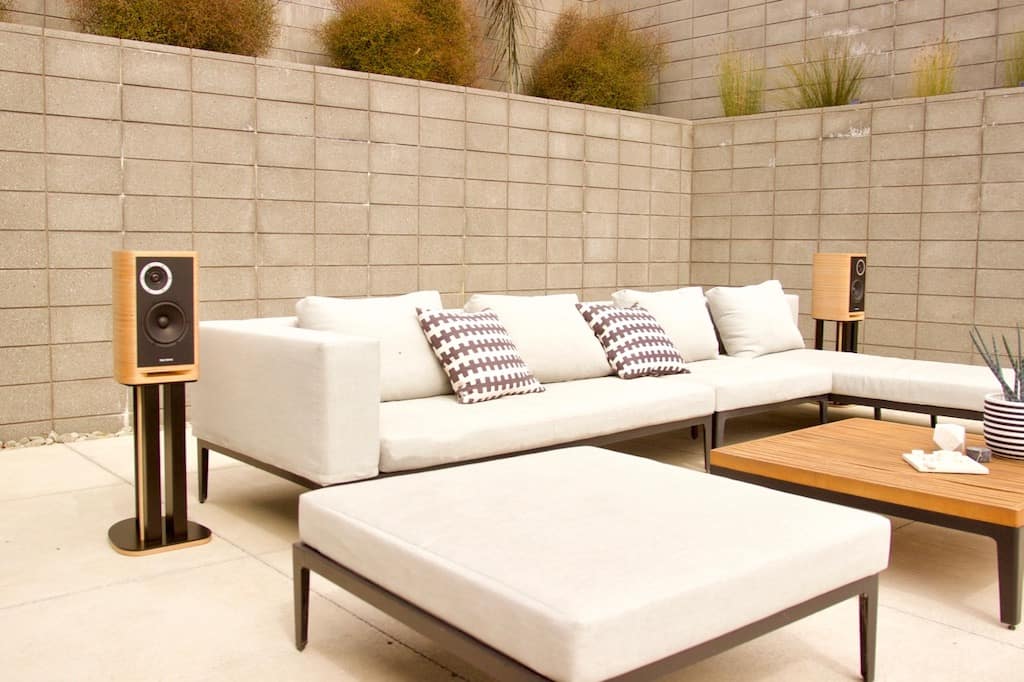
Gary – Why are monitors like that? Why the difference between what people want to listen to in a room and what you listen to in the studio?
Tex – It’s the definition, making sure everything’s there. But it can be very tiring to listen to for long periods of time. But having said that I do really love the sound of studio monitors, especially the big full range ones, because when you have the bottom end to compensate for the clarity in the top end, that’s when you’re really blown away. And it’s sort of what I wanted to achieve with the Tex Tones. I would say they’re sort of that in-between the studio monitor and the domestic speaker. When I was growing up a lot of people would have these monstrous boxes sitting on the floor and just have this waffly boom going on… waffly and indistinct, and they’re the complete opposite of that! I do like that sound sometimes though. You go into someone’s living room and they’ve got an old stereo sitting in a corner.
Gary – I know exactly what you mean. I’ve been in so many flats over the years with everything set up wrong, really old gear, but they’re playing some old Neil Young record and it just sounds so organic.
Tex – Exactly! A really good point! Ultimately it’s the song and the artist. That’s what gets me most, more than having to listen to Norah Jones. They’re not what moves me, it’s getting inside a good song.
Gary – What part of your speakers do you think plays the biggest part in making it sound good? You’ve got what seem like different important things like really solid bracing of the cabinets and the curviness of them which must both make quite a big difference, and then you’ve got the drivers and tweeters themselves.
Tex – I think they all contribute but ultimately when I’m listening to them they do vocals so well. But then I’ll put on electronica with no vocals and it sounds awesome as well. So they’re just doing something right. Initially I had a fairly flat front and then when I curved the front it totally changed the imaging. So it all contributes, but it paints a pretty nice picture anyway. One thing about my speakers is that you can really walk inside the song, really feel like you’re inside the song. I’ve had many moments where I’ve just thought ‘this is as good as you can get’ sort of thing. They can be really special in that way. But I’m biased.
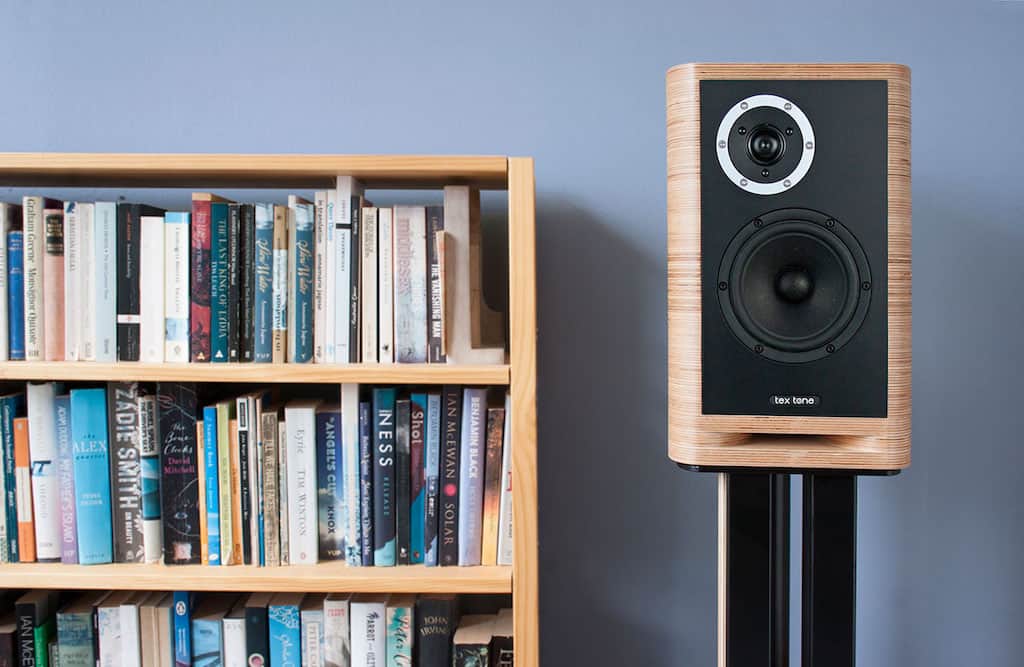
Gary – It’s your job to be biased.
Tex – But I think other people get it as well judging by the look on people’s faces.
Gary – How efficient are they and what kind of power do they need to drive them?
Tex – They’re 87db but I like to put 100 watts a side. I had an Arcam a while back and it was 75 or something and it didn’t quite do it. I’ve got a couple of amps at the moment – a Bel Canto which is Class D and that’s 150 and one that I made myself that’s 180 and I’ve also had one that was 350 a side, and the speakers didn’t seem to bat an eyelid. You couldn’t use a valve amp unless it was a monster. Not really suitable for valve amps.
Gary – Is that a conscious decision you made?
Tex – No, it’s also because the drivers… with high end drivers it seems to be a bit of a trend. The better full-range drivers seem to be slightly less efficient. It’s the price you pay for getting extended full-range in that quality, really. But 87 isn’t that radical. Tannoys will be in the 90s. You can get away with 15 watts or something. I’ve got friends who’ve got a pair of my speakers and they just use a 50 watt Rotel and it suits them fine. It’s totally dependent on what sort of a listener you are. Some people like to absolutely blast their heads off and others are more than happy to have it ticking away and still get enough enjoyment out of it. Anywhere from 50 to 150 is good. Another thing I’ve learned from doing PAs and band gear and that sort of stuff is that it’s far better to have a shitload more power… putting 200 watts into that 100 watt speaker is far better than putting 50 watts into that 100 watt speaker, and you’re far less likely to blow it. When you turn up your 50-watt amp all you’re doing is sending horrible square waves in there and it blows up your speaker. It’s better to have a lot more power than you need.
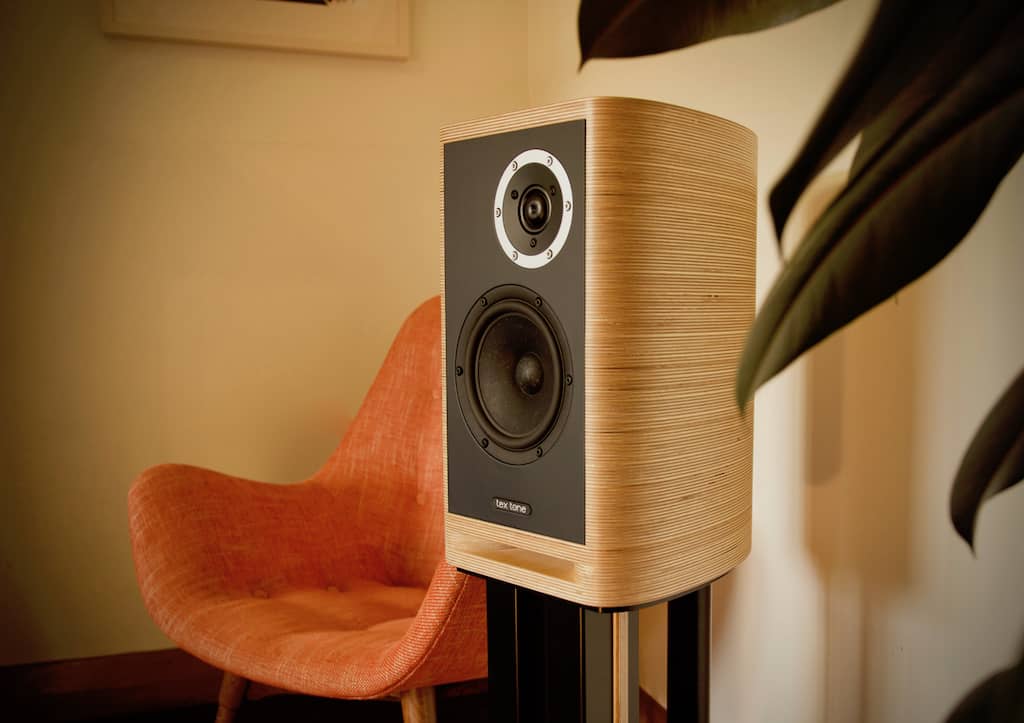
Gary – What would you listen to, personally?
Tex – It’s funny that you mentioned Neil Young before. I’ve listened to a lot of Neil Young. And since David Bowie died I’ve been going a bit nuts on him. But I listen to lots of variety. I bought that Designer Aldous Harding record and I haven’t been able to stop playing that. But I kind of like pop music. We play The Beatles a lot. It depends on my mood and what I’m cooking at the time, because I play a lot of music while I’m cooking.
Gary – How are your ears after all that live work?
Tex – Strangely, they’re pretty good. You’d think they’d be damaged or something. But when I had the misfortune of going onto the stage every now and then to fix something I just could not believe the volume that musicians were playing on the stage. In the mixing situation you’re often two thirds back in the auditorium, and I didn’t think I was a particularly loud sound mixer. I think the punters and the musicians have to put up with a whole lot more than I’ve had to put up with.
https://www.textone.co.nz/art-speakers/














